|
FAQs on Freshwater Worms of All Sorts, Identification
4 Related Articles:
Invertebrates for Freshwater Aquariums by Neale Monks,
Choose Your Weapon: Freshwater Fish Disease Treatment Options by Neale
Monks,
Related FAQs:
FW Worm
Identification 1, FW Worm ID 2,
FW Worm ID 3, FW Worm ID
5, Freshwater Worms 1,
Freshwater Worms 2, Planaria, FW Worm Behavior,
FW Worm Compatibility/Control,
FW Worm Selection,
FW Worm Systems,
FW
Worm Feeding, FW Worm Disease,
FW Worm Reproduction & FAQs
on: Worm Caused Diseases,
Worms as Foods,
FW Invert.s 1,
Aquatic Insects,
Crustaceans, Shrimps,
Terrestrial Hermit
Crabs,
|
.jpeg) |
|
Need help to identify a worm 4/20/20
Hi,
I found a worm outside of my house, just near to my dog, when I accidentally
step on it. After looking it I found this so weird because it is first time
i have ever see worm with glowing blood. I have attached pic
of it, with flashlight and without flashlight. Is it baby millipedes? So
confused.
<Hello. That's quite the find! It appears to be a polychaete rather than a
centipede or millipede. I say that because the body appears to be soft, with
no obvious exoskeleton, unlike those two arthropod groups. A
polychaete ('bristleworm') seems more probable than an oligochaete
('earthworm') because of the fleshy appendages on each segment. However,
terrestrial polychaete are very rare, unlike oligochaetes, which include
numerous terrestrial species. So my guess in the absence of any other
information would be that this is a marine polychaete, perhaps dropped by a
bird onto dry land somewhere near your home. Of course if you live near the
sea, this makes sense -- but if you're more than a few miles inland, that
would be an unlikely explanation. There are freshwater polychaetes, but
they're mostly quite small and unobtrusive, and not at all common.
Fluoresce in polychaetes is quite well documented, though again, to the best
of my knowledge only among marine species. Better photos of the head end of
the animal would help -- polychaetes usually have obvious jaws complete with
sharp pincers in many cases, as well as eyes and tentacles, all of which are
absent from most oligochaetes. It would also help to know where you live. In
the Southern Hemisphere, velvet worms might also be considered, but you
wouldn't find these in Europe or North America, and again, they only live in
specific habitats such as rain forests. Cheers, Neale.>
|
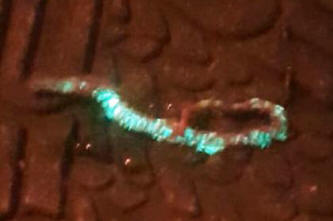 |
Long thin worm like creature hanging from outlet of
gravity filter
Hi
Hope you can help. Over the last several days I have noticed a thin
(maybe 0.5mm in dia) white strand of something hanging down from the
outlet of my built in gravity filter on my Aqua One UFO 550 tank.
<How odd.>
Today, I noticed it had grown in length substantially and when I
tried to grab it with some tweezers, it suddenly and quickly
retracted back into the filter outlet, so whatever it is, it’s
ALIVE! I estimate it to be between 100mm and 120mm long and think it
is some kind of worm, maybe feeding in the water current and living
in the part of the filter that contains the ceramic biomedia.
<Sounds like it! But really would need a picture to be sure.>
The Tank has 7 Angelfish and 3 Bristle Nosed Catfish and 6 Golden
Apple Snails and all seem healthy. Water quality is well maintained,
pH 6.8, Ammonia 0.25ppm, Nitrate 20ppm and Nitrite 0ppm and I do a
regular (3 to 4 week) water change of ~30 litres and always add
Prime.
<Apart from the ammonia, all seems fine. Zero ammonia is always the
aim, and whole at pH 6.8 you'll have less toxic ammonium rather than
free ammonia, do think about whether stocking, feeding, and
filtering are adequate. Do also check the ammonia level of your tap
water.>
Any idea what it may be and is it dangerous to the livestock?
<Unlikely. There are various free-living nematodes and especially
oligochaetes (such as California Blackworms) that can get into fish
tanks. They don't really do any harm, and can actually do some good
in 'deep sand bed' settings. With that said, in excessive numbers
they can indicate too much organic material (i.e., food) in the
tank, which shines a light on maintenance and stocking.>
If so what’s the best way to get rid of it.
<Well, the obvious is to open up the filter and take a look! If it's
a free-living nematode or oligochaete, you can either remove or
leave it in there, depending on your point of view. I set up little
critter tanks around the house (basically large jars on windowsills)
to observe anything like this I find in my pond or my daughter's
Triops tank. It's a fun addition to the hobby.>
Thanks
Bryan
<Cheers, Neale.>
|
Worms in my tank, FW 12/12/19
Hello,
<Gavyn>
I have worms in my tank & I’m not too sure what kind they are & how to get rid
of them so if you could please help me that would be great. I will attach some
pictures of the worms. I have 2 Bettas in my tank & I don’t want anything to
happen to them
<I wouldn't be (overly) concerned with these small (highly likely benign
Oligochaete) worms>
Thank you,
Gavyn Rockburn
<Do read here:
http://www.wetwebmedia.com/fwsubwebindex/fwwormidf.htm
and the linked files (in blue) above. Bob Fenner>
|
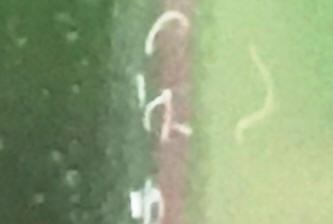 |
Identification of an aquatic worm/possible parasite
12/5/19
Hi there! I've been all over the place trying to find someone to help me
ID this Suspected freshwater aquatic parasite so I can determine how to
treat it. You were recommended by someone on a Facebook Fish group (fish
talk, I believe). - (and before you look at the video, say "it's a
Tubifex worm, you N00b", please read below- that's what I think it looks
like too, but some sort of immaculate conception had to have happened if
that is the case. And I'm not ready to admit the existence of the sewage
fairy, or of
Tubifex eggs hatching inside a fish's Pyloric caeca, growing to an adult
size, and then hatching out and leaving the fish through feces. because
that would just be weird.
A rift lake Cichlid (frontosa) came into my Ultra small, self funded
rescue with double eye infections about 2 weeks ago. I dosed him with
both gram pos and gram neg antibiotics which has cleared up the
infection, and he is doing much better. He started eating, which the
previous short term owner had not seen. She had only had him for a few
weeks, as she bought him and 5 others from another guy who had them 8
years, so he said. It's unknown how long since he last ate. Ph is about
8.5, which is about ideal for these fish, and temp is around 78 degrees.
the previous owner was keeping him in non brackish water- and our water
around here is soft. I'd guess ph somewhere in the 6s. The fish is
stunted and still has not regained color- but at least his eyes are no
longer threatening to leave his head.
However, Last night, I did a water change on his hospital tank: this
included moving the hide, vacuuming the very small amount of gravel
(about a cup of crushed coral to buffer for PH) and squeezing out the
sponge filter. (as a note, no worms were found. I'm pretty sure I would
have noticed. there is just no place for them to hide. )
I left the room to get him frozen Omega 1 food blocks, threw them in the
tank, left the room for about 10 minutes (he is super shy, and won't eat
when I'm there) , and when I returned to get photos of his eyes to
document improvement, I noticed hundreds upon hundreds of little black
worms all over the place- floating, crawling, and in general, being..
well. gross. they are about an inch in length- far larger than detritus
type worms. at first I thought they were some sort of black worm- but
looking closer it was clear that they were definitely not.
My first assumption was they came from the food blocks. I defrosted the
rest of the food I had in cups of his tank water- but no worms showed
up.
Then I sucked as many of the worms out as I could get, and threw them
into a container, and pulled out my USB microscope.
I captured this video:
https://youtu.be/-9VqFEeA0o0
(please Disregard the dead bloodworms, as those were left over from the
Frontosa's dinner and sucked up when I was capturing worms)
They look, to my exceptionally untrained eyes, Like Tubifex worms- but
there is literally no way Tubifex worms could have gotten into the
aquarium. I've already contacted Omega one to verify that there was no
way that any worms could survive their sterilization or freezing
process: I asked them to help ID, as if it's not a parasite, their food
is the only reasonable explanation if it's not an egg-laying larva etc,
but they
declined (a little rudely, in fact) . None of the foods I fed last night
(omega one frozen Super carnivore ( Mysis Shrimp, Brine Shrimp, and
Bloodworms) , and, I believe frozen Omega One Baby Krill- if not it was
a block of brine, mysis, or bloodworms.) have any T.F. worms in them.
heck.
none of the other foods I feed do ether, as the amino acids are not
really ideal for many things. I have no TBFX worms in my food arsenal or
in our home.
Are you able to help me figure out what in the heck these are? They
don't look like any of the common parasitic worms I have seen, or could
find photos of (I looked at the roundworms, tapeworms, Thorny headed
worms, Flukes, or any of the nematodes I've seen- But I'm just a fairly
new hobbyist, doing my best. But If they did not come from the fish as
parasites, I have a whole different "where the heck did the worms come
from " issue. did they survive the intestines of this fish for months?
Did the Omega 1 people lie? is there actually a sewage fairy who drops
worms into aquariums?
I have a number of antiparasitics on hand- I just need to know which one
to use (and gosh, an ID so I understand lifecycle would be awesome too!)
- I have Levamisole, which I think is the most all-encompassing of the
antiparasitics that I have, but before I start that I just wanna know I
have the right ID.
Thanks so much. I'm loosing my cool over here at this as I can't find
any logical cause for them other than parasites, and the illogical ideas
are all far past borderline of absurd.
Thanks so much!
Andie
<Andie, the short answer is that these do look like Oligochaetes, and
you can check that yourself by looking to see if they are (a) segmented;
and (b) possess bundles of tiny hair-like structures, chaetae, on the
segments, often on the underside. Very few, if any, of the Oligochaetes
are parasitic. So generally if you have these, they're not going to do
much harm. Tubifex are of course the best known, but Lumbriculus
variegatus, the California Blackworm, is an aquatic variety that is
quite commonly seen in
the aquarium trade. It is sometimes used as fish food and sometimes as
part of a 'deep sand bed' filter where it helps to aerate the substrate
and promote good water quality. Tapeworms do of course have segments,
being closely related to the Oligochaetes within the Annelida phylum,
but they have distinctive flat, leaf-life segments and the famous set of
toothy mouthparts on the round head used to hold themselves into
position. Your worms don't look anything like those. On the other hand,
if you can't see
segments, then roundworms (Nematodes) or some other group of worms will
need to be considered, and some of these are indeed parasitic. But the
fact your worms seem to have a well-developed gut seems to suggest a
free-living, rather than parasitic, mode of life. So far as your
Frontosa cichlid goes, there are all sorts of reasons cichlids get sick,
but de-worming and treating as per Hexamita infections (i.e.,
Metronidazole) generally make sense when dealing with vague wasting-type
problems. Cheers, Neale.>
Re: Identification of an aquatic worm/possible parasite
12/5/19
Thanks so much! I actually don't see much wasting in this guy. Other
than the eyes he looks ok. He was skinny when i got him, but he was
being bullied. He is filling out as expected with access to food. I will
use an antiparasitic fir good measure to hit the main common things now
that I know i don't have some weird parasite i need to make sure is
involved.
<"Antiparasite" medications aren't my favourite approach. Best to choose
specific medications for specific parasites. Often the "cure alls" are
really "cure nothings". 'Jack of all trades, master of none' as they
say. With commercial cichlids, Hexamita and various intestinal worms are
the two commonest problems. So may as well choose medications specific
to them in the absence of anything indicative of some other problem.>
My main issue now is. "Well, if they didn't come from inside him, where
the heck did they come from!" But that is definitely not your problem.
<Indeed. But Oligochaetes usually get in via substrates, via live food,
or possibly via live plants if those came with soil or sand around them.
Otherwise unlikely to get in under their own steam.>
Thank you so much for clarifying my suspicion, and providing specific
information about WHY. (I didn't know about the specific gut structure,
but that makes total sense, for example.
I really appreciate your time!
Andie
<Most welcome. Cheers, Neale.>
Re: Identification of an aquatic worm/possible parasite
12/5/19
yup- just to make things difficult, it's a hospital tank- nothing goes I
or out without being sanitized, the substrate was a rinsed cup of
crushed coral from the 40 lb bag I use to try to combat our "might as
well be reverse osmosis" water. I'll go through the filter and tear it
apart- that is the only place I can think of as I did pull a filter from
another tank
<A mystery, for sure. But if the worms are segmented and have chaetae,
they're likely harmless. Indeed, probably something worm-eating fish
like loaches would normally eat.>
Thanks for the tip on antiparasitics. I agree with you on that, - I'll
keep an eye for any real suggestions that h needs it before I dose
anything at all, as long as he keeps getting fatter.
Your help literally saved my sanity. All my thanks to you and yours!
<Thanks for the kind words. I do hope the Frontosa recovers. Cheers,
Neale.>
|
Thread like Worms 9/20/19
<14 plus megs....><Link>
Hello, I have read through an entire page of "worms of all sorts" with
descriptions and answers on everything worm related but couldn't find my
exact worm I'm dealing with.
<Not surprising; there's a bunch>
These worms are peach/red colored. Round, from what I can tell. Squiggly
swimmers.
<Good clues>
I did not see any in the tank, on the fish, coming from the fish, but
discovered them after gravel vacuuming out several fish tanks. They look
like Camallanus worms, but I have yet to find a fish with the tell tale
worms protruding from the cloaca. I'm going to try and attach a video
showing these worms. Please help me identify so I can properly treat!
<... very likely some type/species of Nematode... and not deleterious; but
beneficial. To reduce their numbers I'd just do your regular maintenance...
Weekly partial water changes incorporating gravel vacuuming.
Bob Fenner>
|
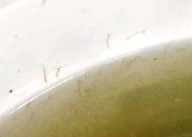 A small still, optimized
A small still, optimized |
|
Worm ID 8/14/19
Hi WetWeb!
<Hey Orlando!>
I have cultured daphnia for years and have currently run into a worm I have
never seen before.
After water changes, I usually see the normal thin, white detritus worm wiggling
around the containers.
But a month ago, I started noticing these clumps of red/pink worms at the bottom
of my containers. The info I found online was that Tubifex worm is a type of
detritus worm, but I failed to ID the worms I have.
If they are Tubifex, how would they manage to get indoors and in my containers?
<Mmm; well, from the looks/clumping and color... these do appear to be
Tubificids, at least Oligochaete worms. Could be something like a bug blew in
with the beginnings of the culture... most anything wet could. Do you have a
microscope there, maybe one w/ a USB connection? I'd like to see these up-close.
Bob Fenner>
Thank you Wetweb!
|
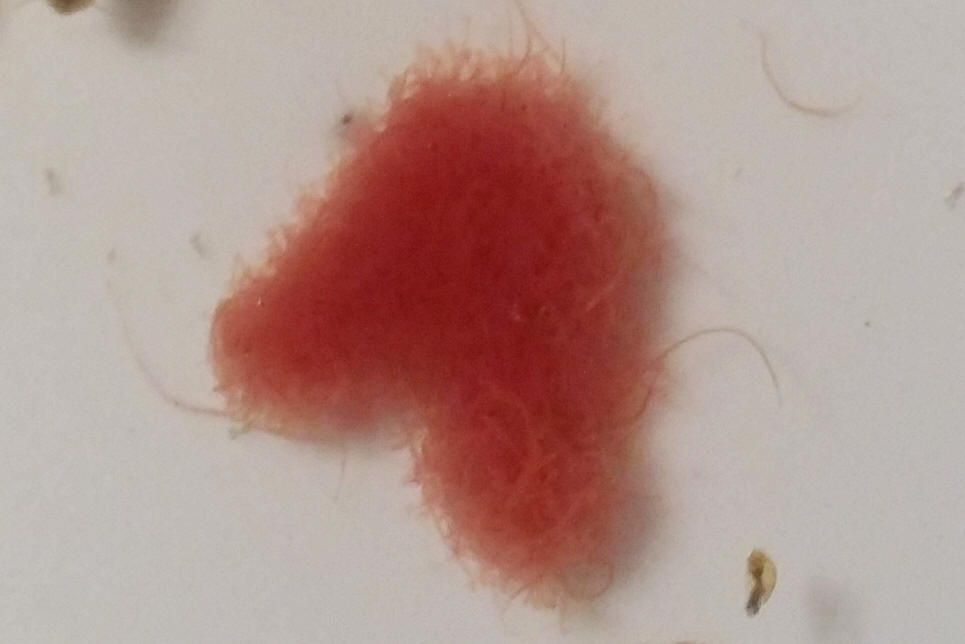
|
Re: Worm ID 8/23/19
Hi there!
<Hey Orlando>
Thank you for your quick response!
<Sure>
I finally received the microscope I ordered, but I am not too knowledgeable on
how it functions quite yet. I managed to get some pictures and video but getting
things in focus is proving difficult.
The other thing I noticed recently is that there are clumps of worms right at
the very top of the waterline of my containers, which I imagine is due to oxygen
levels (half the mass of worms sits outside the waterline).
I hope these pictures help you ID them. Since they are in my daphnia cultures, I
imagine they are fine to feed to my fish?
<Very likely fine to feed. Do appear segmented... and by the motion, are
Oligochaetes... the general (family) term Tubificids is still my guess>
Thank you so much for your help!
Orlando
<Thank you for this follow-up. Bob Fenner>
|
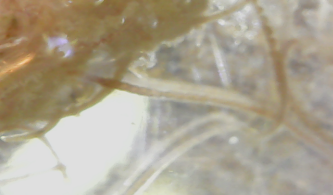 |
|
|
Puddle of thin white worms 01/17/19
I’m hoping to find out what these are and if we need to destroy them. My
instinct is to let them be, but we do have dogs so I want to be sure.
<Mmm; I would shovel them up and bury them. Might be nematodes/roundworms, but
could be horsehair worms, Nematomorphs...>
They are moving. It has recently been raining here in Southern California quite
a bit. This is in the back patio. I’ve never seen such a thing so I thought I’d
ask. Thanks for any help you can provide.
Dawn
<Cheers, Bob Fenner, who also lives in (currently rainy) S. Cal.>
|
.jpeg) |
|
Re: Puddle of thin white worms 01/17/19
Thank you for the quick reply. Have a great day! :)
<And you Dawn. BobF>
|
Unknown roundworm in aquarium 10/2/18
Hi!
<Cath>
I saw this worm yesterday in my aquarium. Could you please help me
identify it and whether or not I should get it out of my tank?
<Umm; nothing attached. No photo here>
It's currently in a 29 gallon planted tank with dirt (from a bag) and
the tank is about a year old. The most recent addition in the tank was a
pond plant. Could it have come in that way?
<Oh yes; roundworms, nematodes are VERY common; almost all are
innocuous; not harmful>
It doesn't look segmented and seems to have a suction on one end
(the back end). The back end doesn't look like an earthworm where it's
tapered, but looks kind of blunt, like it was cut. I haven't
seen it burrow into the substrate or crawl up the glass like other
worms. It's brown and looks
"solid" rather than clear.
<Oh... this reads more like a leech, Hirudinean, rather than a
roundworm; which are by and large smooth, tapered at both ends, light
colored>
I've uploaded a video I took earlier today.
https://youtu.be/wd_PdDDcxLA
<Unfortunately this video isn't playing for me>
Hopefully the video is clear enough. It moves pretty quickly, but it's
not shy. I could probably get another video or picture if you need it.
<Do please send the image, video link along>
Please let me know if you need any additional information.
<I'd be removing this worm>
Thank you!
Cat
<Thank you for sharing. Bob Fenner>
Re: Unknown roundworm in aquarium 10/3/18
Hi,
<Hey Cath>
Thanks for getting back to me so quickly.
<Sure>
Sorry for the broken link. The video was uploaded as private, rather
than unlisted.
<Ahh!>
Here's the new link: https://youtu.be/wd_PdDDcxLA
Please let me know if there are any problems with it.
<Oh yes; this is a Leech (yeah, yuck); possibly parasitic on your
livestock. Remove it (w/ extreme prejudice)>
Thanks,
Cat
<Welcome! BobF>
Re: Unknown roundworm in aquarium 10/3/18
Thank you for the id.
<Welcome>
So, if I'm looking at it correctly, the leech is moving backwards? It
searches with the tapered end and uses the blunt end as an anchor.
<Hirudineans have "haptors" on both ends, and can move backwards and
forwards using them and extending their bodies>
Thank you again.
<Certainly welcome. B>
Worms in freshwater substrate 4/23/18
I found several of these worms buried in the substrate of my 46gal
bowfront, today. Any idea what they are, if I should get rid of them and
if so, how? They’re about 1mm thick, and maybe 1.5 - 2” long at a guess?
They were pretty upset to be disturbed and all balled up. There are two
balled together in this video.
Thanks!
<No video attached. But as a general rule, freshwater worms are
harmless. Beneficial, even. Do look up freshwater Oligochaetes for
examples of the 'good' kind of worm. California Blackworms are quite
common and used in freshwater deep sand beds. Tubifex less positive in
the sense of preferring/indicating relatively dank conditions, but in
themselves harmless, even enjoyed as food by most fish. Cheers, Neale.>
|
Worm Identification Help 3/17/18
Hello,
<Val>
I've never had an aquarium worm before but after introducing new aquarium plants
and 5 Habrosus Cories, I've discovered this little guy wiggling in my tank about
12 hours later.
<Neat!>
Specs:
10 gallon freshwater aquarium
Heated to about 78 degrees F
Filtered with homemade filter (bio/mechanical + a PhosGuard bag, no carbon
component)
Planted/has Fluval brand root tabs in substrate
The tank is a recent upgrade from my 3 gallon with new bagged substrate, some
established plants, and my resident female Betta splendens (she's been with me
over six months). I added some Jungle Val, Anacharis, and Sword to the tank
yesterday, along with about 5 more pounds of substrate - all locally sourced
from little fish stores, and 5 Habrosus Corydoras.
Fortunately, my female Betta is in a hanging breeder box to acclimate to her new
tankmates before reintroduction. I selected this LFS because I had been told
that they pre-quarantine their livestock, so I'm hoping this squirming
ride-along isn't dangerous to my tank. If it is something to be concerned about,
what steps should I take for removal/treatment??
<Appears to be an annelid, Oligochaete... Relation to earthworms. Not parasitic;
not dangerous for you or your fishes... I'd just siphon or net out and remove.
This worm was very likely a hitchhiker on a plant>
Thank you so much!
Concerned Fish Mom,
Valerie
<Cheers, Bob Fenner>
|
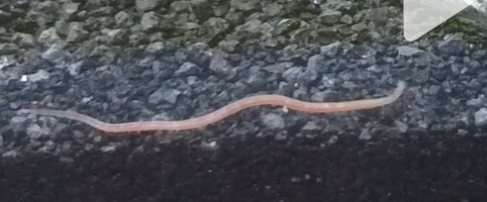 |
|
|

